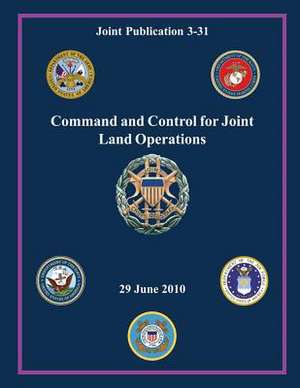Command and Control for Joint Land Operations (Joint Publication 3-31)
Autor Chairman of the Joint Chiefs Of Staffen Limba Engleză Paperback
Preț: 104.65 lei
Nou
Puncte Express: 157
Preț estimativ în valută:
20.03€ • 21.00$ • 16.67£
20.03€ • 21.00$ • 16.67£
Carte disponibilă
Livrare economică 11-25 martie
Preluare comenzi: 021 569.72.76
Specificații
ISBN-13: 9781480126831
ISBN-10: 1480126837
Pagini: 166
Dimensiuni: 216 x 279 x 9 mm
Greutate: 0.4 kg
Editura: CreateSpace Independent Publishing Platform
ISBN-10: 1480126837
Pagini: 166
Dimensiuni: 216 x 279 x 9 mm
Greutate: 0.4 kg
Editura: CreateSpace Independent Publishing Platform
